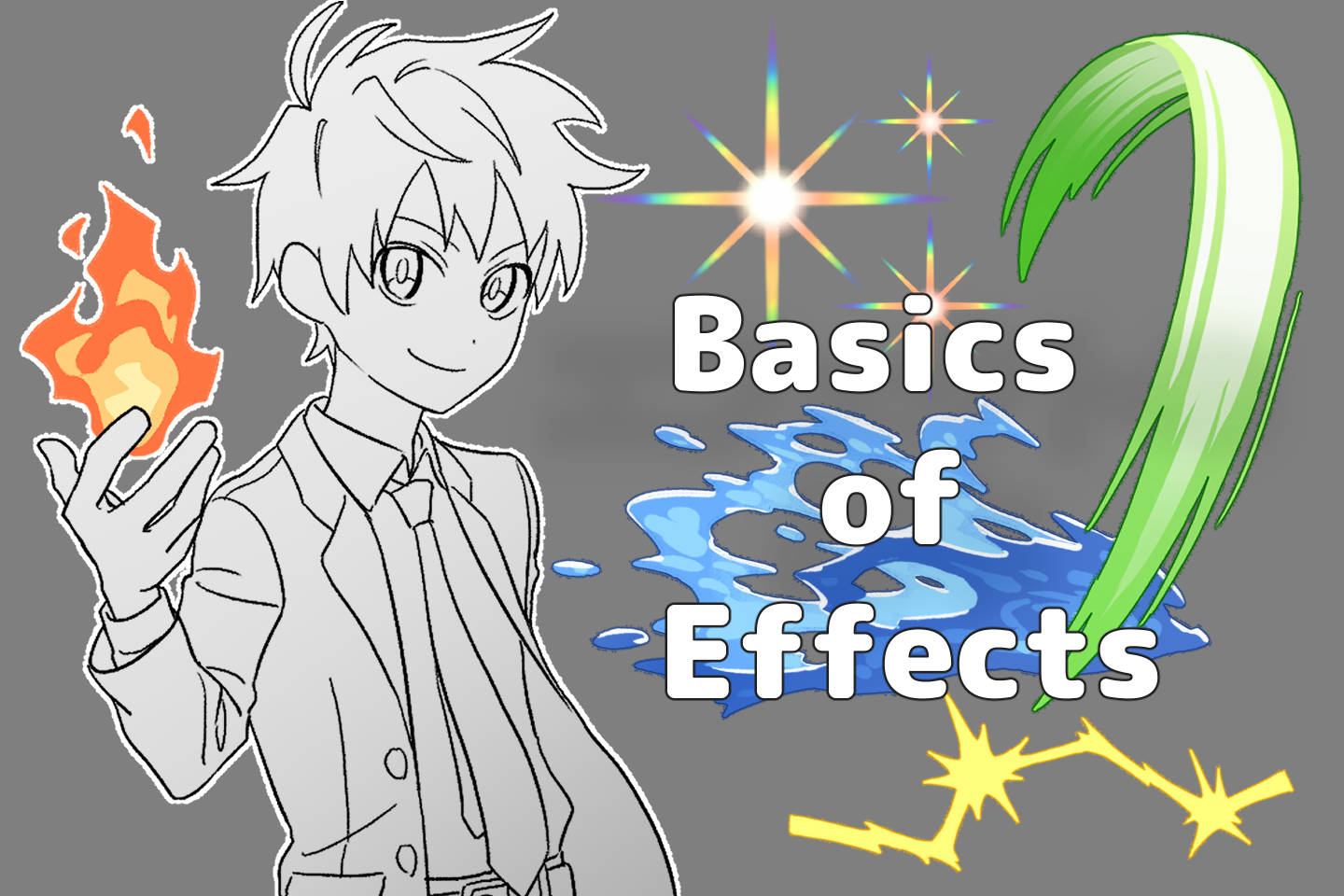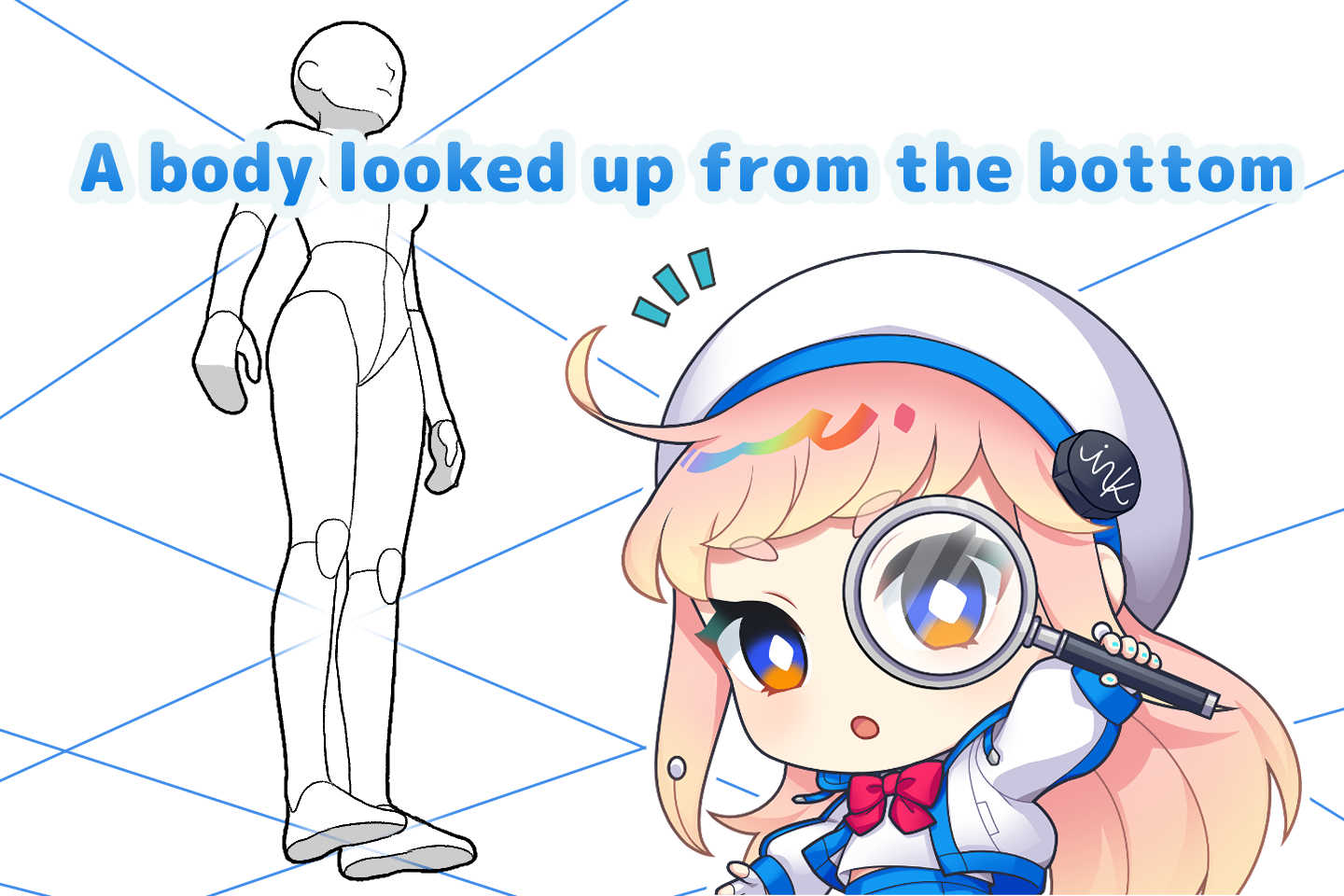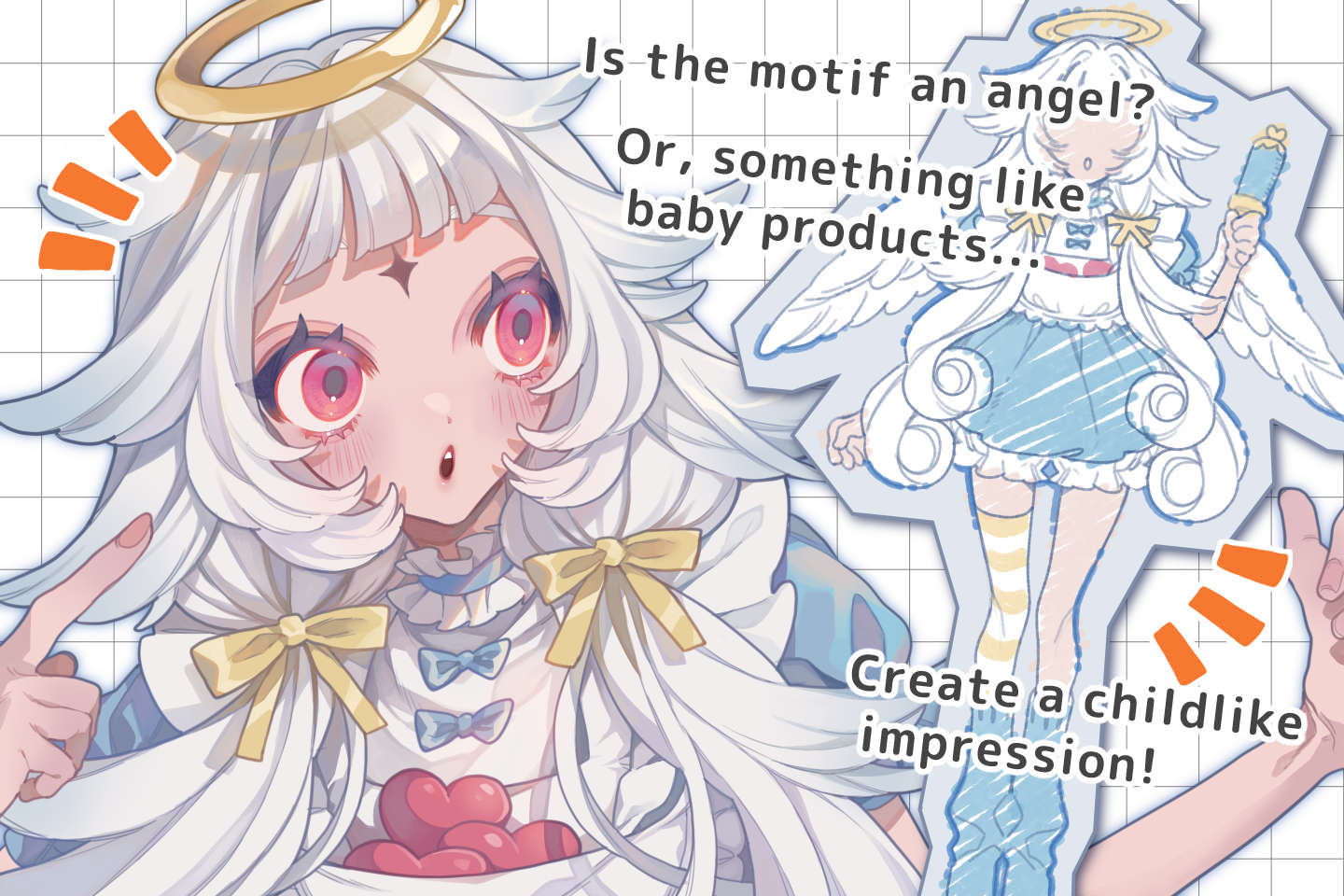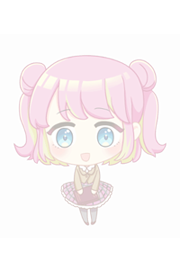
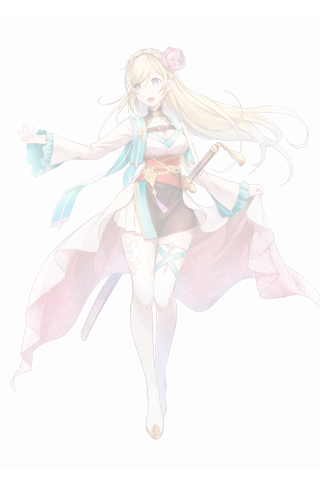
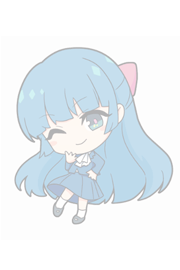
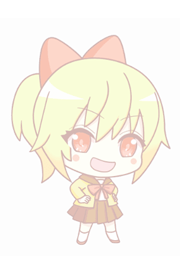
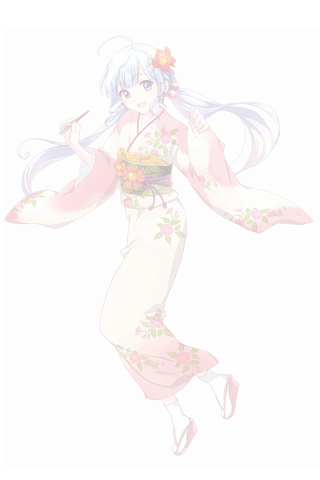
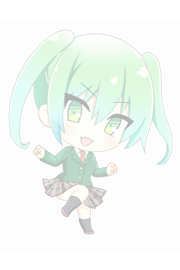







This article was created by the illustrators and manga artists who teach at the illustration and manga school, egaco, based on the knowledge and skills they have honed through commercial production and other work. If you would like to learn more about content that is tailored to what you want to draw, we recommend taking a private lesson at egaco.
Cats, which are a familiar presence in our lives are cute and attractive, but they are creatures that are difficult to take a balance when drawing.
You may be wondering how to express their carefree poses and soft coat.
The secret to drawing cats well is to understand the balance when drawing.
Let’s learn and understand the structure of a cat’s face and body so that you can draw cats freely and enjoyably.
What is necessary to draw a cat’s face well? Basic knowledge and the tips
First, replace the distinctive features of a cat’s face, such as the outline, ears and mouth, with simple shapes.
When getting the shape, it is easier to draw while organizing it based on the tentative picture.
Let’s draw the face as seen from the front and profile of the cat based on the tentative picture.
How to draw a cat’s face as seen from the front
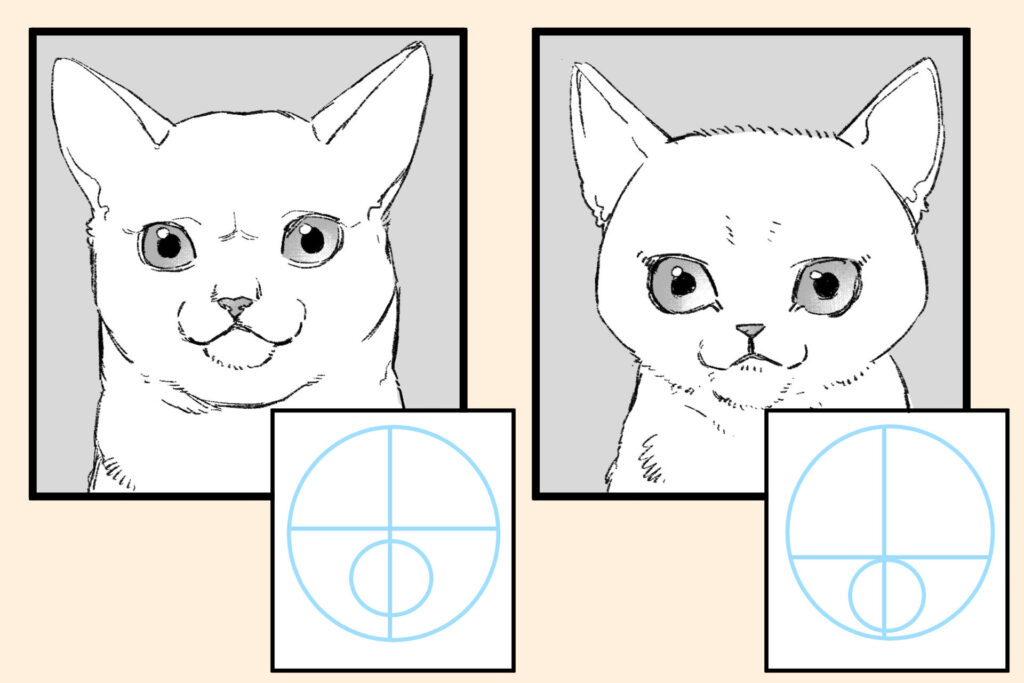
When drawing a tentative picture of a cat’s face, draw a circle as you would do for a human face.
If you draw a cross-shaped line that is running through the center, it will be easier to balance the facial features.
The size of the mouth will fit into the lower half of the circle, which is drawn with the size of the face in mind.
In the center area, draw a tentative picture of a circle that is about one third the size of the whole face.
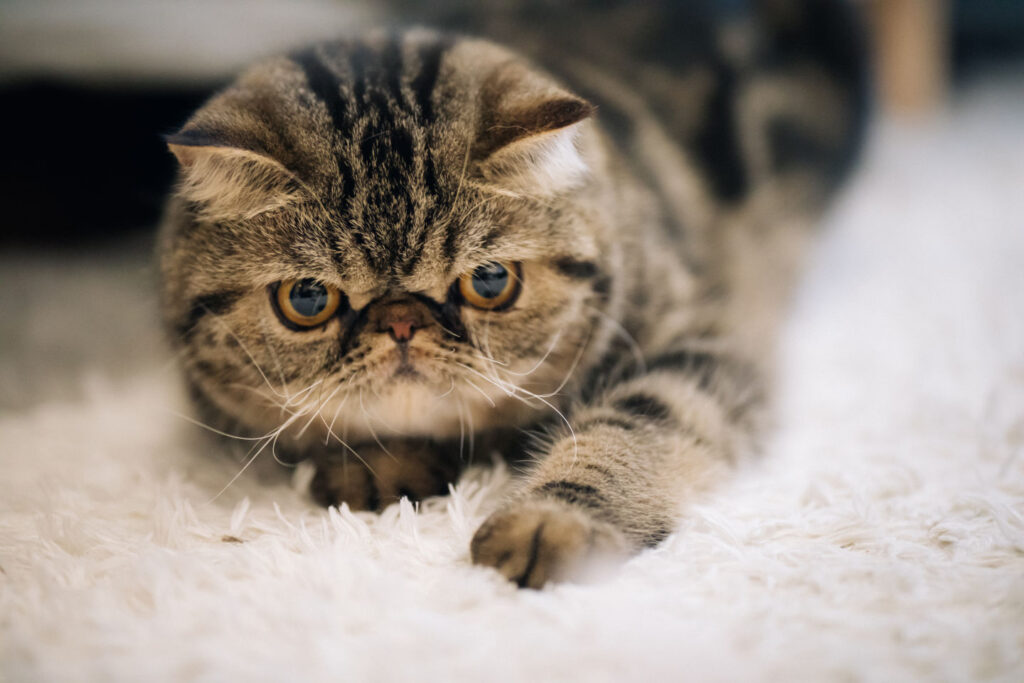
The distance between the eyes and nose differs depending on whether it is an adult cat or kitten, or the kinds of cat, such as an exotic shorthair, so please refer to the images or photographs.
How to draw a cat’s profile
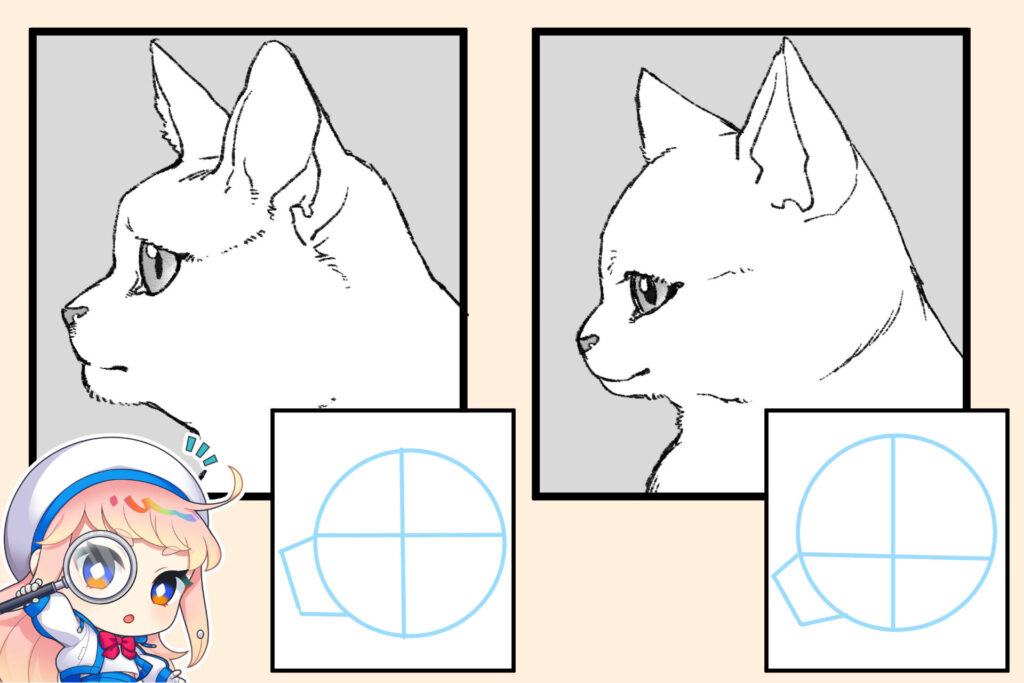
When drawing a profile, draw the round tentative picture that indicates the size of the face and the crossline in the same way as for a face seen from the front.
For the muzzle (mouth), draw it in the shape of a trapezoid that tapers towards the tip of the nose.
When drawing the ears from the side, be careful to draw them further back than the center line of the face.
If you draw the ears too far forward on the face, the whole face will look flat and lacking in depth, which causes a feeling out of place.
What is a cat’s muzzle?
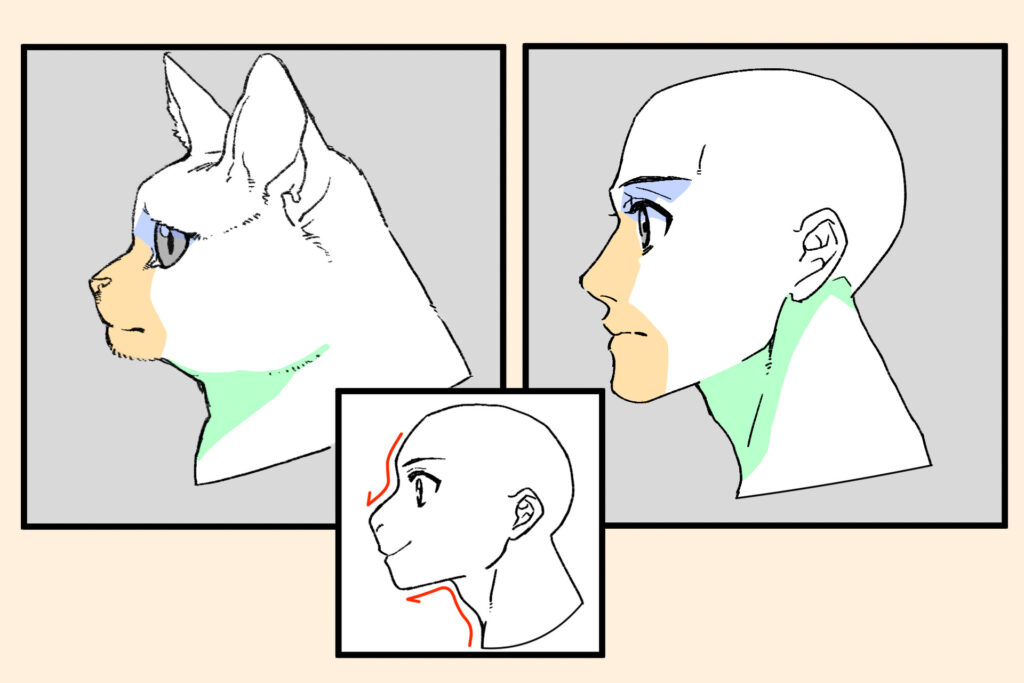
The muzzle is the area that corresponds to the nose and mouth in humans (see orange area).
A cat’s muzzle protrudes further forward than a human’s.
Cats have small, few teeth, so their muzzles are relatively small. Be careful not to draw them too big.
Also, the size of the nose becomes wider in large cats (tigers and leopards).
When drawing them, pay attention to the size of the nose according to the kind of a cat.
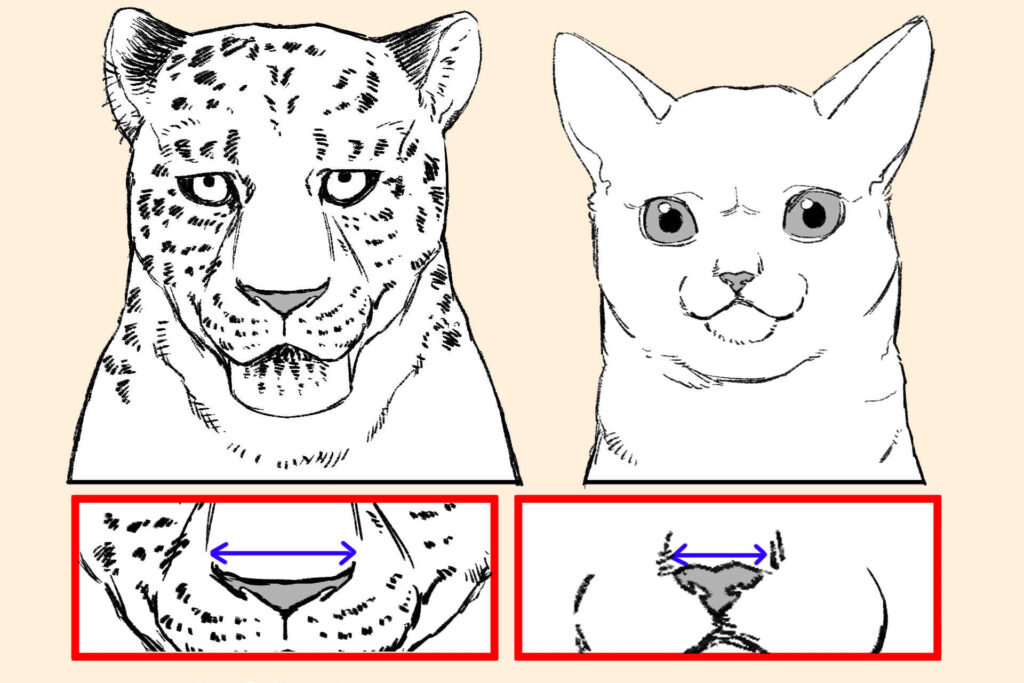
Let’s get the features of cat’s ears right!

Cats’ ears are pointed and slightly thin.
Many of them are also large and well-developed so that they can easily gather sounds from the surrounding area.
At the tips of the ears, there are hairs called a tuft of hair that help the cat to catch even the smallest movements when hunting.
The shape of the ears is often close to a triangle, and in some cases they may droop depending on the type.
One of its characteristics is that it is thin, so be careful not to draw it too thickly.
Let’s get the cat’s eye features right!
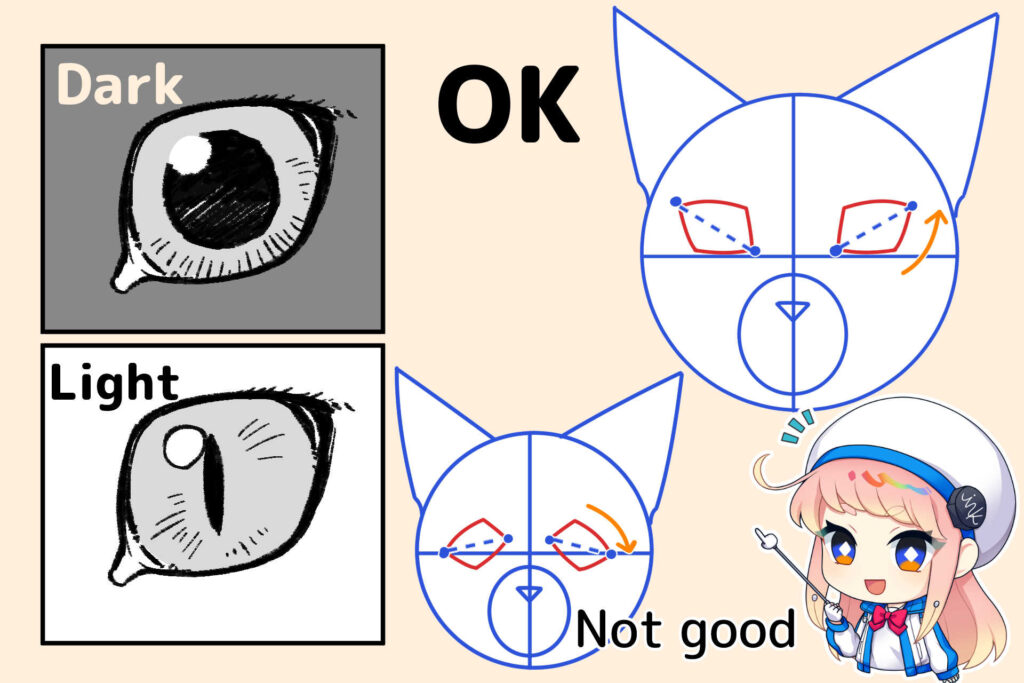
One of the features of cat eyes is the shape of the eyes which are known as cat eyes upturned at the corners.
To draw eyes upturned at the corners (i.e., Tsurime), draw the outer corners of the eyes aiming slightly above the center line of the face.
For the base of the eye shape, be aware of the rounded diamond shape.
Also, the pupils of cats’ eyes may appear slit-like and elongated in bright places.
This is a characteristic of nocturnal animals, and the eyes of cats have developed a high sensitivity to light in order to make it easier to see their surroundings even in the dark of night.
The four basics and tips to draw the cat’s body well
What is important is understanding the balance of a cat’s body as well as its structure
We will illustrate the balance of a cat’s body by comparing it to the human skeleton.
Both humans and four-legged animals can divide their bodies into parts such as head, neck, torso, and legs, but the arrangement of these parts differs slightly.
Let’s draw them with an awareness of the differences in size and balance!
Cat’s waist is not curved
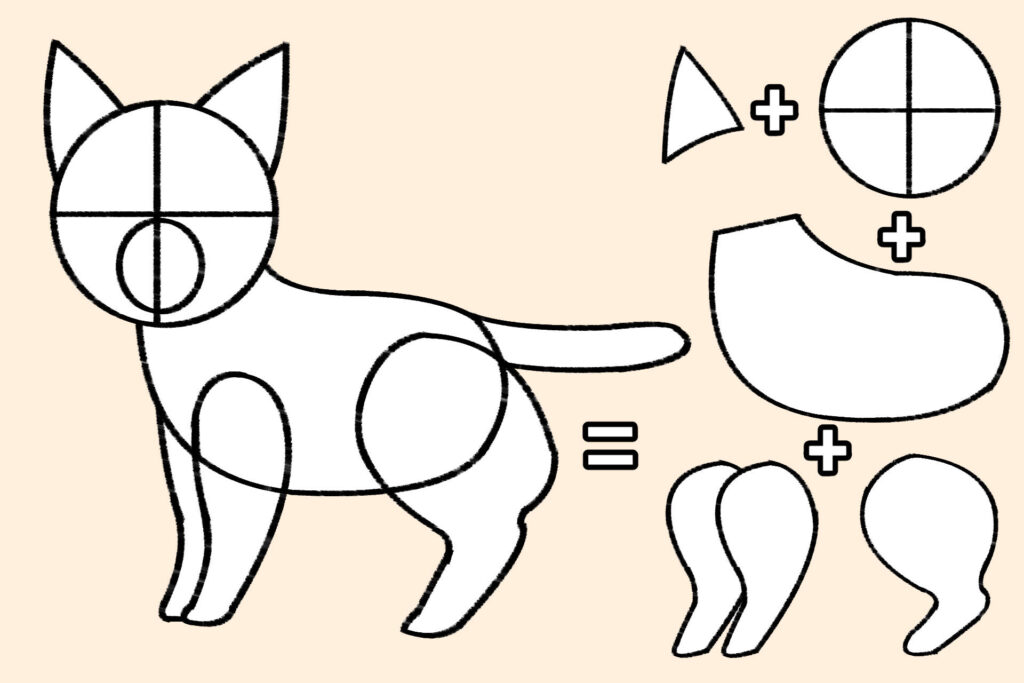
The waistline of a cat is loose, and there is not much of a curved part.
The body has a rounded silhouette, like an eggplant.
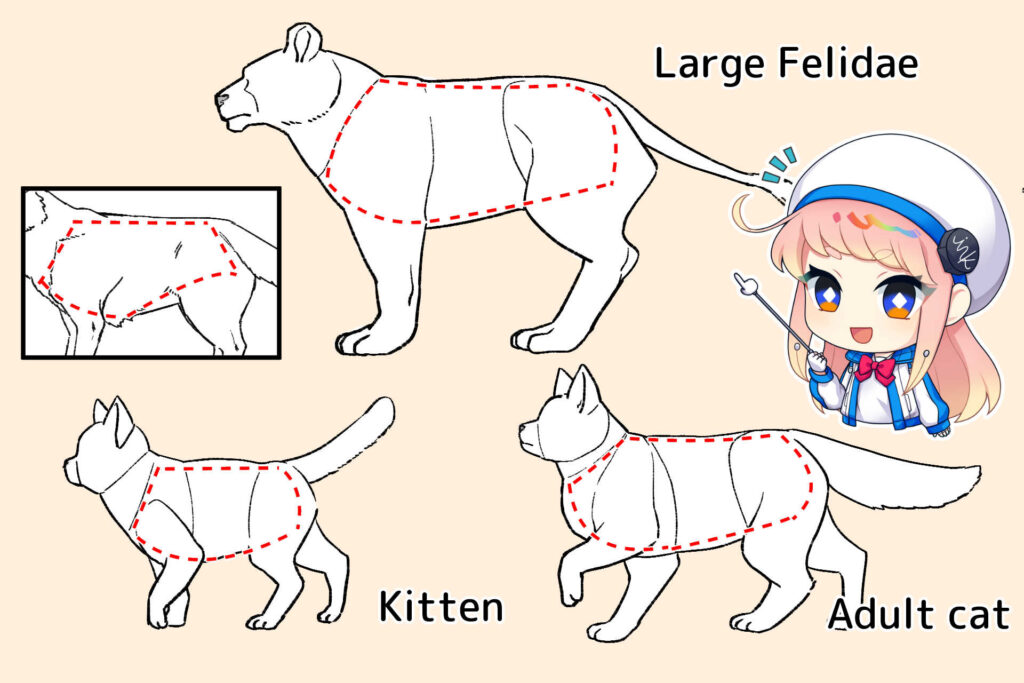
This characteristic is the same for large Felidae.
Lions and tigers also have thick bodies with no waist.
However, it is generally better to draw the body without emphasizing the waist, except for some cats such as cheetahs.
The fore and hind paws of a cat bend differently
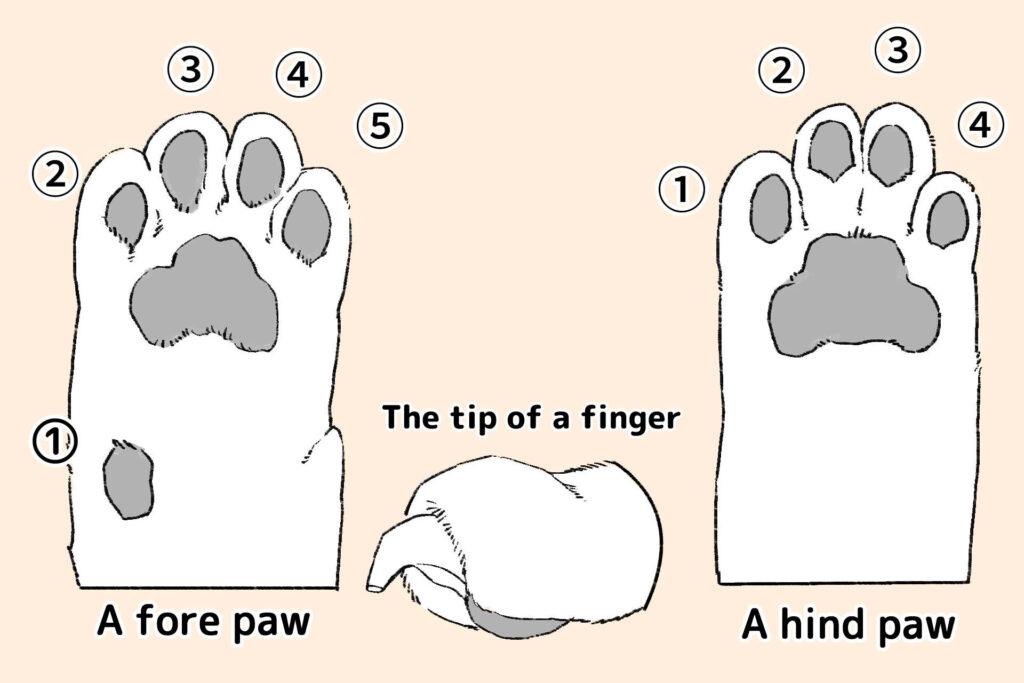
Cats walk on four paws, basically standing on their toes.
They have curved paws to help them jump and move easily in high places.
If you compare the ankles, you can see that the front and back skeletons are slightly different, with the front paws being shorter and the back paws being longer.
As to the joint of knees, the fore paws are slightly bent towards the back so draw the hind paws bent forwards.
Also, because the number of toes differ between the fore and hind paws, draw the fore paws with five toes and the hind paws with four toes
A cat’s claws are free to be pulled out and put back in, and are curved so that they can easily climb trees and hook onto various surfaces.
The pads of the paws act as a cushion and are excellent at muffling noise.
Draw the different lengths of body hair to make it more convincing
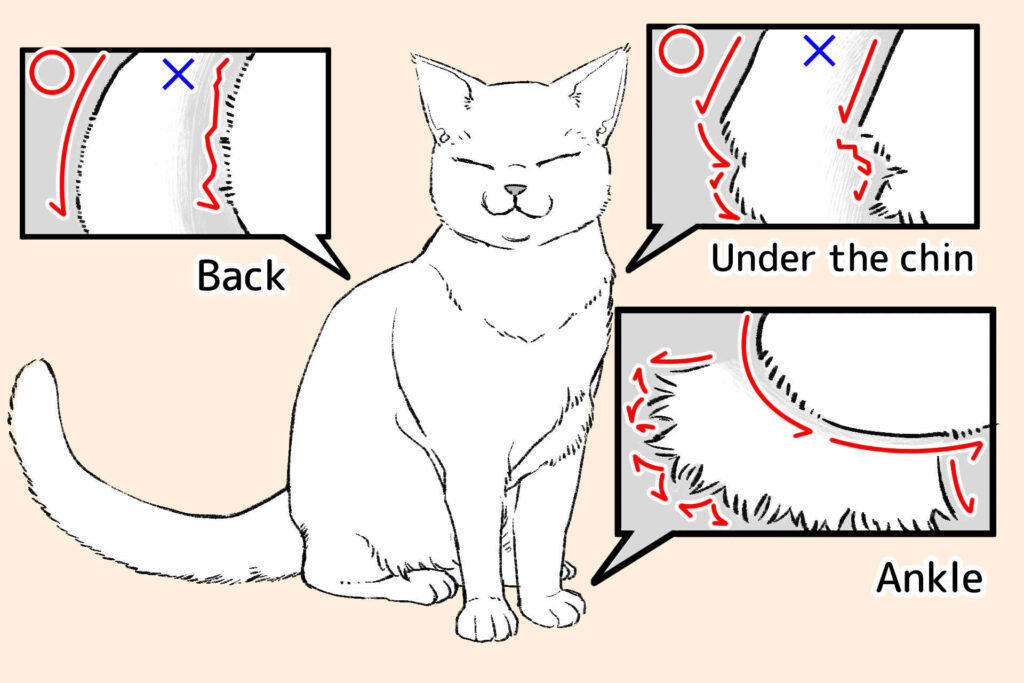
A cat’s body hair is soft, supple and dense.
The fine hair grows to match the lines of the body, but the silhouette around the face varies by each cat.
Some cats have a round face with a lot of body hair on their cheeks, while others have a sharp-looking face with short body hair along the line of the chin.
For long-haired breeds, it’s a good idea to draw the hair as a whole, with an uneven, fluffy appearance in mind.
Rather than just drawing it in a haphazard way, let’s aim for the hair that is convincing, with the image of what kind of coat of hair is it? How does it feel when touched in mind.
Let’s draw cats by kind
Domestic cats have different coats and facial features depending on the kind
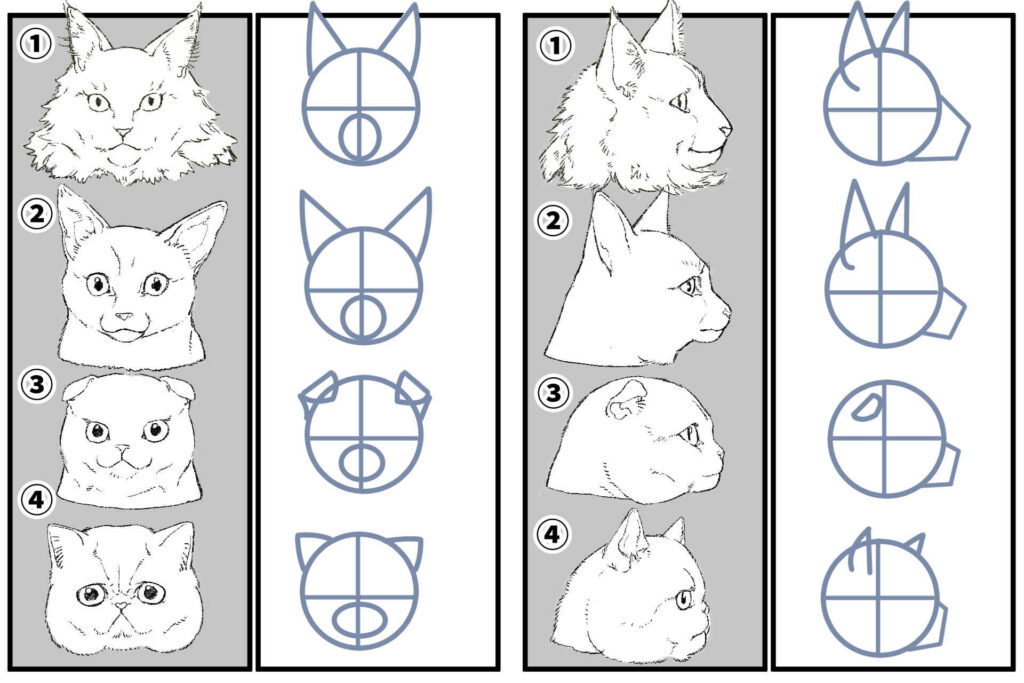
Even domestic cats have differences in their outlines and parts depending on the kind.
1: Large domestic cat: Maine Coon
The Maine Coon, a famous large domestic cat is impressive with its luxurious coat and magnificent tail.
The features are its dignified face, a large and vertical face line and a sturdy mouth.
The ears are large and they have a combination of coolness and cuteness.
The coat is also fluffy and magnificent, so draw it with movements that matches the contours of their body.
2: Siamese cat
Compared to the Maine Coon, the Siamese cat has a slender, elegant body and its long legs are characteristic.
Draw their face as a beautiful inverted triangle from the chin to the tips of the ear.
Because they have a short, dense coat, you should draw the outline of the body without drawing too much bushy hair but tracing its silhouette.
For the coat, add touches of short hair to the areas that move a lot such as the joints and neck like the wrinkles on a person’s clothes.
3: Scottish Fold
The most distinctive feature of the Scottish Fold is its droopy ears.
Their round faces and eyes as well as their plump cheeks and mouths give them a cute impression.
There are both short-haired and long-haired varieties, but they have a strong, round, cute impression; so, let’s emphasize this point when drawing them.
4: Exotic shorthairs
Exotic shorthairs are characterized by their large, round faces and small noses that are flat and turned up.
Their round eyes are very striking, and their muzzles are shorter and flatter than other cats.
Since there are big differences depending on the kind of cat, let’s observe a real cat or photos.
Let’s draw different kinds of large cat family, such as lions and tigers
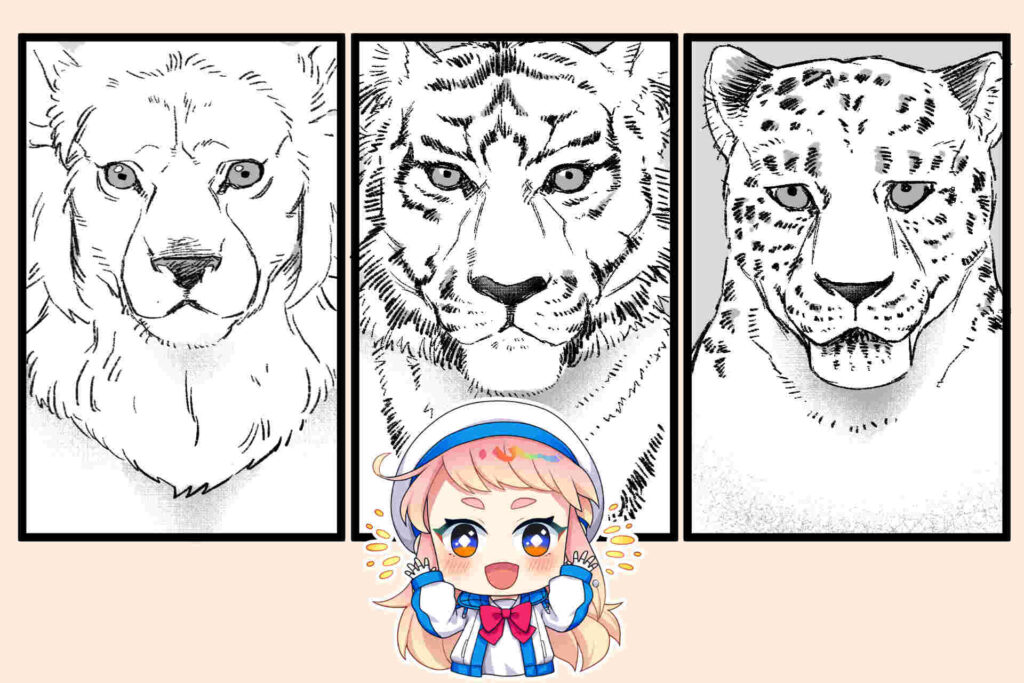
The most common large cats are lions, tigers, cheetahs and panthers.
The outlines of the cat family vary by kind.

Cheetahs have the smallest faces and the most slender features.
Lions and tigers have a rounder, thicker outline overall because they have lots of muscles in their jaws.
Leopards have a slightly longer face than other cats, so you should try to draw them with a more slender face.
You can draw cats easily with the right practice
The basic rules for drawing both humans and animals are similar, so if you understand the rules and are aware of the differences in balance between the two, you will be able to draw cats enjoyably and freely.
In addition, you should also actively observe real cats, not just pictures of them.
You can learn how to draw cats on your own, however, if you have no experience, we can let you know the way on how to practice drawing pictures you have in your mind at our school.
